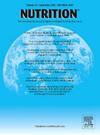The critical care nutrition landscape in sub-Saharan Africa: Field insights and clinical commentary from resource-limited clinical settings
IF 3.2
3区 医学
Q2 NUTRITION & DIETETICS
引用次数: 0
Abstract
Critical care resources are very limited on the African continent. Within these limited resources, adequate and formalized critical care nutrition support is an even rarer clinical resource. While nutrition products for nasogastric feeding are specified in international consensus guidelines as essential requirements for critical care, these are desperately undersupplied in African Intensive Care Units (ICU). Malnutrition in ICUs in low and middle income countries is 65–78%, roughly double that of developed countries. Furthermore, malnutrition prevalence among severely ill oncology and infectious disease subgroups is 90–100% in the African setting. Dietetic resources in general are few and even fewer within critical care units. Integration of dietetic skills and services into ICU care is not routine, not governed by formalized protocols and is associated with low insight from non-nutrition health professionals. Overall level of perceived critical care nutrition skill and competency is lacking. These are barriers to ICU nutritional care along with poor compliance with clinical practice guidelines, delays in nutritional referrals, insufficient dietitian-to-patient ratios and severe shortage of medical nutrition products and feeding pumps. Both enteral and parenteral nutrition are subject to improvised formulation options because commercial product acquisition and procurement is not aligned to clinical need and is seldom reimbursed through government health systems. This results in both inadequate and inappropriate nutrition delivery as well as safety concerns. Combined clinical and political strategies for incremental quality enhancements and capacity building for critical care nutrition support are urgently needed in the region.
撒哈拉以南非洲的重症监护营养状况:来自资源有限的临床环境的现场见解和临床评论
非洲大陆的重症监护资源非常有限。在这些有限的资源中,足够和正式的重症监护营养支持是一种更罕见的临床资源。虽然国际共识指南将鼻胃喂养的营养产品指定为重症监护的基本要求,但这些产品在非洲重症监护病房(ICU)严重供应不足。低收入和中等收入国家重症监护病房的营养不良率为65-78%,约为发达国家的两倍。此外,在非洲环境中,恶性肿瘤和传染病亚组的营养不良发生率为90-100%。一般来说,重症监护病房的饮食资源很少,甚至更少。将营养技能和服务整合到ICU护理中不是常规的,不受正式协议的约束,并且与非营养卫生专业人员的低洞察力有关。缺乏对危重病护理营养技能和能力的总体认知水平。这些都是ICU营养护理的障碍,同时还有临床实践指南的不合规、营养转诊的延误、营养师与患者的比例不足以及医疗营养产品和喂养泵的严重短缺。由于商业产品的获取和采购与临床需要不一致,并且很少通过政府卫生系统报销,因此肠内和肠外营养都受到临时配方选择的影响。这导致营养输送不足和不适当以及安全问题。该地区迫切需要采取临床和政治相结合的战略,逐步提高重症监护营养支持的质量和能力建设。
本文章由计算机程序翻译,如有差异,请以英文原文为准。
求助全文
约1分钟内获得全文
求助全文
来源期刊

Nutrition
医学-营养学
CiteScore
7.80
自引率
2.30%
发文量
300
审稿时长
60 days
期刊介绍:
Nutrition has an open access mirror journal Nutrition: X, sharing the same aims and scope, editorial team, submission system and rigorous peer review.
Founded by Michael M. Meguid in the early 1980''s, Nutrition presents advances in nutrition research and science, informs its readers on new and advancing technologies and data in clinical nutrition practice, encourages the application of outcomes research and meta-analyses to problems in patient-related nutrition; and seeks to help clarify and set the research, policy and practice agenda for nutrition science to enhance human well-being in the years ahead.
 求助内容:
求助内容: 应助结果提醒方式:
应助结果提醒方式:


